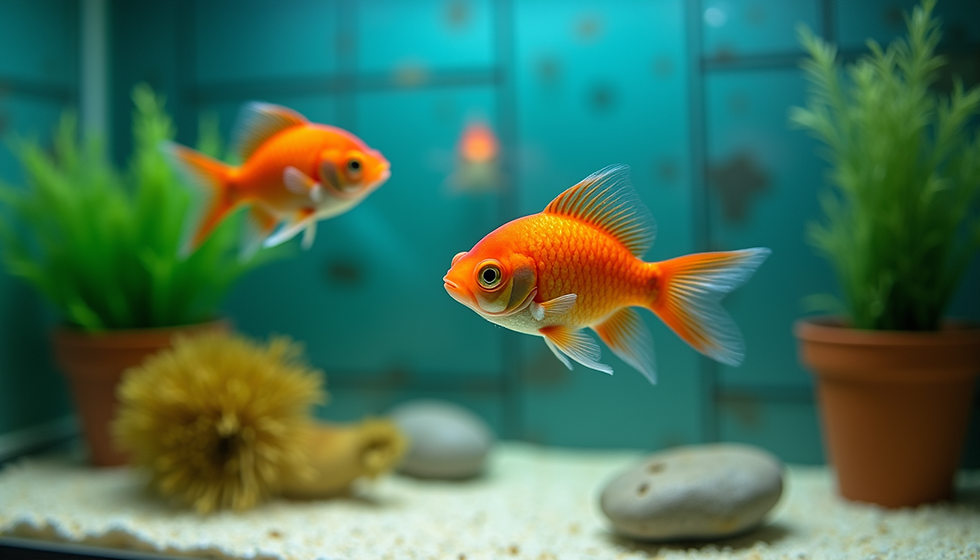Everything You Need to Know About Aquarium Maintenance
- John Wright-Ibarra

- May 12, 2025
- 4 min read
Maintaining an aquarium is an art and a science. It requires knowledge, practice, and commitment to keep those stunning fish and plants healthy. Whether you are a beginner or have years of experience, understanding the aspects of aquarium maintenance can enhance your aquatic experience significantly. In this post, we will explore the ins and outs of aquarium maintenance, including practical tips for success.
Aquarium Maintenance
Aquarium maintenance is crucial for the health of fish and plants in both fresh and saltwater tanks. It involves various tasks, such as cleaning, monitoring water parameters, and ensuring that your aquatic environment is balanced. A well-maintained aquarium can thrive for years and provide a beautiful display in your home or office.
The first step in aquarium maintenance is regular water changes. Changing 10-15% of the water weekly can significantly improve water quality and remove any accumulated toxins. This practice is essential for keeping fish healthy and preventing algae growth.

Another critical aspect is monitoring and adjusting water parameters. Good water quality depends on factors like pH, ammonia levels, nitrite, and nitrate levels. You can use test kits available at aquarium stores to keep tabs on these parameters. For instance, freshwaters thrive in a pH range of 6.5 to 7.5, but saltwater fish typically prefer a slightly higher pH.
Essential Equipment for Aquarium Maintenance
Having the right equipment can make aquarium maintenance much easier. Some essential tools include:
Filter: A good filtration system helps keep the water clean. Depending on the size of your aquarium, you might choose a hang-on-back filter, canister filter, or sponge filter. Each has its advantages and is suited for different tank sizes.
Heater: If you're keeping tropical fish, a heater is necessary to maintain a stable temperature. Ideally, most tropical fish thrive between 75°F to 80°F.
Testing Kit: pH, ammonia, nitrite, and nitrate testing kits are essential. Regularly testing these parameters can prevent many common aquarium issues.
Cleaning Tools: Algae scrapers, gravel vacuums, and nets are important tools for routine cleaning and maintenance.
Aquarium Salt: For freshwater aquariums, aquarium salt can aid in reducing stress and promote fish health.
By investing in high-quality equipment, you can simplify your maintenance tasks and provide a stable environment for your aquatic life.
How much does an aquarium service cost?
If you're considering professional help for your aquarium maintenance, understanding the costs involved is essential. The cost of aquarium services can vary widely depending on factors such as:
Tank Size: Larger tanks require more maintenance, which can increase the service cost.
Location: Prices may vary based on the region and availability of services nearby.
Service Frequency: Regular maintenance services can often be cheaper than a one-time deep clean.
On average, you might expect to pay between $50 and $200 per service visit. Some companies also offer package deals for regular maintenance, which can save you money in the long run. To find reliable aquarium services near you, consider searching online and reading customer reviews.

Fish Care Tips
Proper fish care goes hand in hand with effective aquarium maintenance. Here are some essential tips for keeping your fish healthy:
Avoid Overfeeding: Fish food can lead to excessive waste production and poor water quality. Feed your fish only what they can consume in 2-3 minutes.
Monitor Behavior: Pay attention to your fish's behavior. Changes such as lethargy, hiding, or unusual swimming patterns may signal health issues.
Quarantine New Fish: Whenever you introduce new fish to your aquarium, it's best to quarantine them for a couple of weeks. This practice helps prevent the introduction of diseases to your existing fish.
Know Your Fish: Research the specific needs of your fish species. Different types of fish have varying requirements for water temperature, pH, and tank mates.
By understanding the needs of your fish, you can provide the best care possible and ensure they thrive in your aquarium.
Maintaining Aquatic Plants
If you're including live plants in your aquarium, they require their own set of maintenance tasks. Healthy plants are not only beautiful but also beneficial for water quality. They can absorb excess nutrients and carbon dioxide and produce oxygen.
Here are some tips for maintaining aquatic plants:
Adequate Lighting: Most plants require a certain amount of light to thrive. Consider investing in a good aquarium light that mimics natural sunlight.
Nutrient Supplementation: Some plants need additional nutrients like potassium and iron. Use aquarium fertilizers specifically formulated for aquatic plants.
Prune Regularly: Regular pruning helps remove dead leaves and prevents overcrowding. This practice ensures that all plants receive proper light and nutrients.

Final Maintenance Tips
To wrap up your aquarium maintenance routine, here are some last-minute tips:
Keep a Maintenance Log: Document your water changes, test results, and any observations about your fish and plants. This record can help identify patterns and improve your care routine over time.
Stay Educated: Join online forums, watch videos, or read books about aquarium care. The more you know, the better you'll be at maintaining your aquarium.
Seek Professional Help: Don't hesitate to reach out for professional aquarium services when needed. Your local aquarium service provider can offer valuable advice and support to enhance your aquatic environment. You can find them by searching for aquarium services near me.
Maintaining an aquarium can be a rewarding and enjoyable hobby. By following these practical tips and techniques, you can create and sustain a vibrant aquatic ecosystem. Happy fish-keeping!





Comments